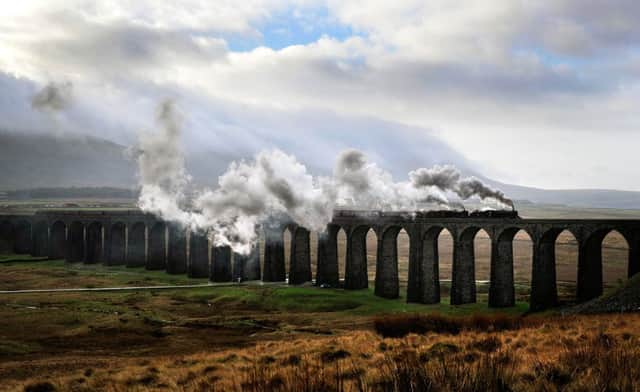30 years ago today – decision that saved Settle-Carlisle railway


At Carlisle station, spontaneous applause rang out among the passengers as a guard relayed the information.
The Government had not intended its U-turn on England’s most scenic railway to be a headline event.
Advertisement
Hide AdAdvertisement
Hide AdIts decision to spare the axe on the route from Settle in the Yorkshire Dales, over the Ribblehead Viaduct and on to Carlisle, had been buried in a written answer by the Transport Secretary, Paul Channon, to the Skipton MP, David Curry.
Having reviewed the evidence, Mr Channon said, he had decided to refuse closure consent.
“A number of factors have changed since I announced last year that I was minded to give consent to closure,” he added.
“To call it unexpected is putting it mildly,” said Mr Rand, a campaigner who would go on to chair the Friends of the Settle Carlisle Association.
Advertisement
Hide AdAdvertisement
Hide Ad“It was one of those unforgettable and joyous moments in life – the more so because of its surprise.”
The U-turn had come after years of campaigning by locals to retain a rotue the nationalised British Rail had written off.
But others, including Mr Channon’s deputy, Michael Portillo, saw it as a lifeline for otherwise isolated communities.
Mr Portillo eventually went up against Margaret Thatcher to secure the U-turn, and has said he considers saving the line to be his “greatest achievement”. Last year, he accepted the honorary role as president of the Friends group.
Advertisement
Hide AdAdvertisement
Hide Ad“The 30th anniversary is really important. It’s been a generation since the reprieve,” said Ruth Annison, who in 1989 was chairman of the Settle-Carlisle Railway Business Liaison Group, and one of nine people to hand in a scrapbook of supporting evidence at Downing Street.
“What we were able to do was to highlight the loss of business and employment, if the Settle-Carlisle line were to close,” she said.
“The campaign to keep it open was international by the end. The decision was regarded as the first reversal of British Rail closure policies.”
The 1989 landmark led to the immediate repair of the decaying Ribblehead Viaduct – a job which Mr Channon admitted was “much cheaper than previously thought” – and, a decade later, an upgrade to the line itself.
Advertisement
Hide AdAdvertisement
Hide AdYet its anniversary, a cause for celebration in the tourism industry, is seeing it move backwards as well as forwards, with a return to its most traditional use.
No longer needed to supply coal to Yorkshire’s power stations, it has reverted to carrying limestone from the quarries of Upper Wharfedale.
The Dry Rigg and Arcow sites at Helwith Bridge, north of Settle, have been reconnected to the line and a third at Horton-in-Ribblesdale is expected to follow.
“They reckon the have saved the Dales and surrounding area 16,000 lorry journeys since 2016,” Mr Rand said.
Advertisement
Hide AdAdvertisement
Hide AdThe railway’s reprieve was “a huge moment” for the Yorkshire Dales National Park, said David Butterworth, chief executive of the authority that runs it.
“The line brings considerable economic, transport and environmental benefits. It means that residents can have days out to market towns, while tourists can visit, without the need for a car.
“It’s a heritage attraction as well as a working railway. The line’s marvellous infrastructure has become an integral part of a landscape loved the world over.”